When it comes to owning a car, maintenance costs often play a crucial role in the overall ownership experience and long-term affordability. Among the many routine maintenance tasks that vehicle owners encounter, brake repairs stand out as both essential for safety and potentially expensive, depending on the car model.
Brakes are a critical component of any vehicle’s safety system, responsible for slowing and stopping the car reliably under all driving conditions. Because of their importance, understanding the costs associated with brake jobs can significantly impact how prospective buyers choose a vehicle, as well as how current owners budget for repairs.
Brake jobs generally involve replacing worn brake pads and, often, brake rotors (also called brake discs). While brake pads are designed to wear out over time and are relatively inexpensive, brake rotors can be a major cost factor due to their size, material composition, and complexity.
The cost to replace brake discs can vary dramatically based on the vehicle’s brand, model, year, and the technology embedded in its braking system. High-performance vehicles, luxury cars, and those with advanced electronic braking aids tend to have more expensive brake components and labor requirements.
Conversely, mainstream economy cars with straightforward braking systems typically offer much more affordable brake maintenance.
In this article, we will explore the spectrum of brake job costs by highlighting five cars known for their cheap brake repairs and five that tend to have costly brake disc replacements and repairs. This contrast aims to provide insight into why brake costs can vary so widely and what factors influence these differences.
For anyone in the market for a new or used car—or even owners looking to understand what they might face in maintenance expenses—this comparison sheds light on one often overlooked aspect of vehicle ownership.
Understanding why some cars have cheaper brake jobs involves examining the availability of parts, the design and complexity of the braking system, labor requirements, and vehicle usage patterns. Cars with simpler, more standardized braking systems often benefit from mass-produced parts, which keeps prices competitive.
Additionally, vehicles that are popular worldwide tend to have abundant aftermarket parts, giving owners multiple options to save money.
In contrast, luxury and performance cars often require specialized, high-quality materials such as ventilated, cross-drilled, or carbon-ceramic brake rotors, which significantly increase part costs. The need for electronic recalibration and specialized diagnostic tools in modern brake systems also raises labor costs in these vehicles.
Moreover, driver behavior and vehicle weight impact brake wear, influencing how frequently brakes need servicing. Cars used for aggressive driving, towing, or high-speed performance will wear brake components faster, leading to more frequent and costly brake jobs.
On the other hand, daily commuters in lightweight vehicles with moderate driving habits typically enjoy longer intervals between brake services. By presenting examples from both ends of the brake job cost spectrum, this article will equip readers with practical knowledge to make informed decisions.
Whether choosing a car with budget-friendly maintenance or preparing for the expenses associated with a luxury or performance model, understanding brake job costs is an essential piece of the ownership puzzle. Let’s begin by diving into the five vehicles renowned for their affordable brake repairs.
5 Cars With the Cheapest Brake Jobs
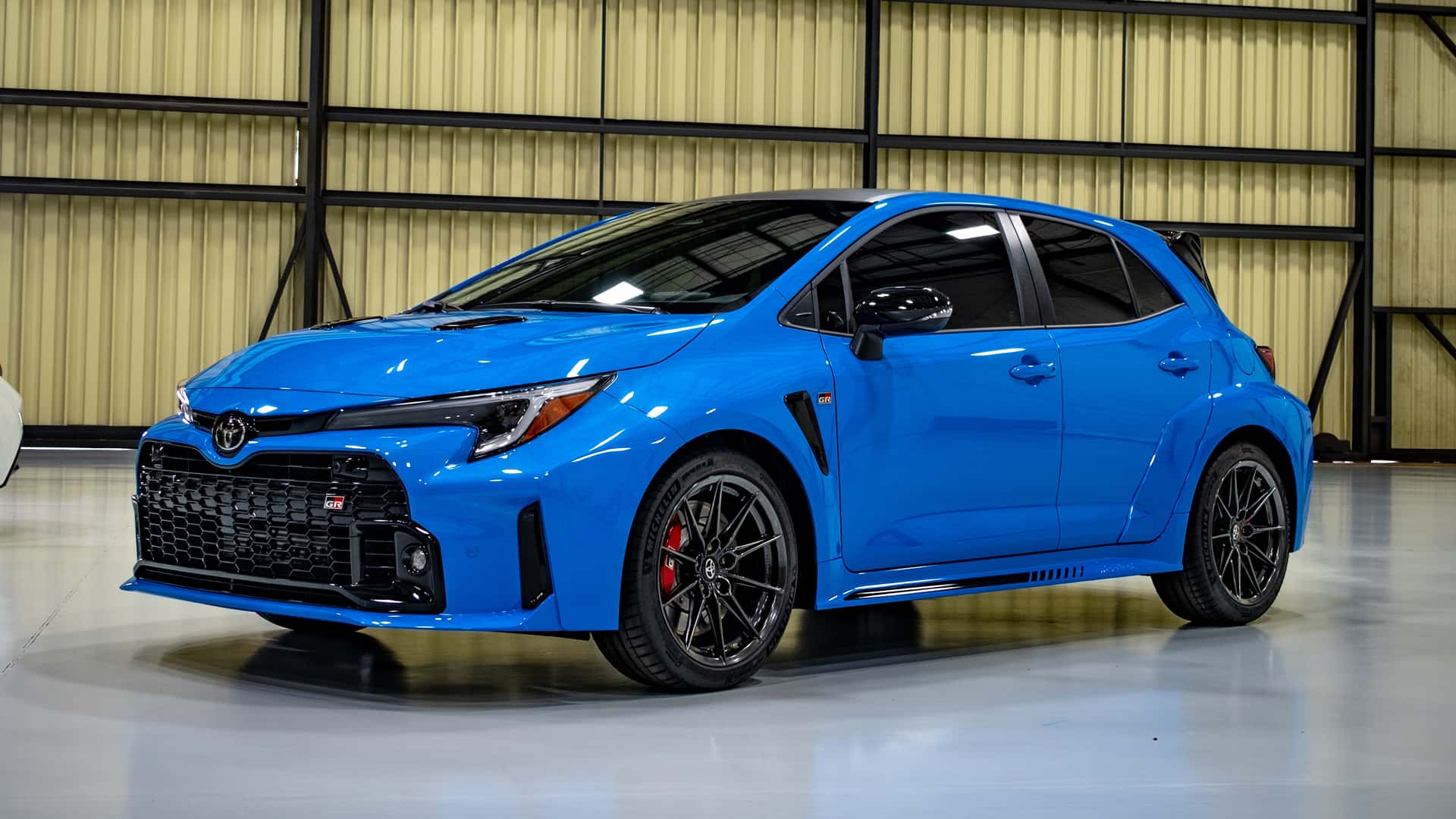
1. Toyota Corolla
The Toyota Corolla stands out as a benchmark for affordable maintenance, particularly when it comes to brake jobs. One of the primary reasons the Corolla’s brakes are cheap to service is the simplicity and commonality of its braking system.
The Corolla employs conventional disc brakes on the front wheels and drum or disc brakes on the rear, depending on the model year and trim.
This system has been around for decades with little variation, meaning that replacement parts like brake pads, rotors, and calipers are widely available in the aftermarket and at a very reasonable cost. This widespread availability creates a competitive market for parts, significantly driving down prices for owners.
Furthermore, Toyota’s global presence ensures that parts supply chains are efficient, keeping inventory well-stocked in almost every region. This availability is crucial because it reduces wait times and prevents costly shipping fees, which are often tacked onto repairs for rare or specialized components.
The Corolla’s brake components are standardized, meaning parts from different suppliers can often be substituted without compromising safety or performance. For owners, this means greater flexibility and bargaining power when choosing where and how to get their brakes serviced.
Another key factor that keeps brake jobs on the Corolla inexpensive is the relative ease of access to the brake system for mechanics. The Corolla’s brake assemblies are designed in a way that technicians can perform routine replacements and repairs without needing expensive diagnostic equipment or special tools.
This lowers labor costs because brake jobs take less time and don’t require complex disassembly or recalibration of high-tech systems. Many independent repair shops are comfortable working on Corollas, which further drives competitive labor pricing.
Lastly, the Corolla’s reputation for reliability and moderate driving dynamics means that brake wear tends to be gradual and predictable. The car is not excessively heavy, nor is it engineered for high-performance driving that could accelerate brake disc or pad wear.
Drivers who use their Corolla primarily for commuting and everyday errands usually find that their brake components last longer, reducing the frequency and overall cost of brake jobs. For these reasons, the Toyota Corolla is widely regarded as one of the cheapest vehicles for brake maintenance, a major factor in its enduring popularity among budget-conscious consumers worldwide.
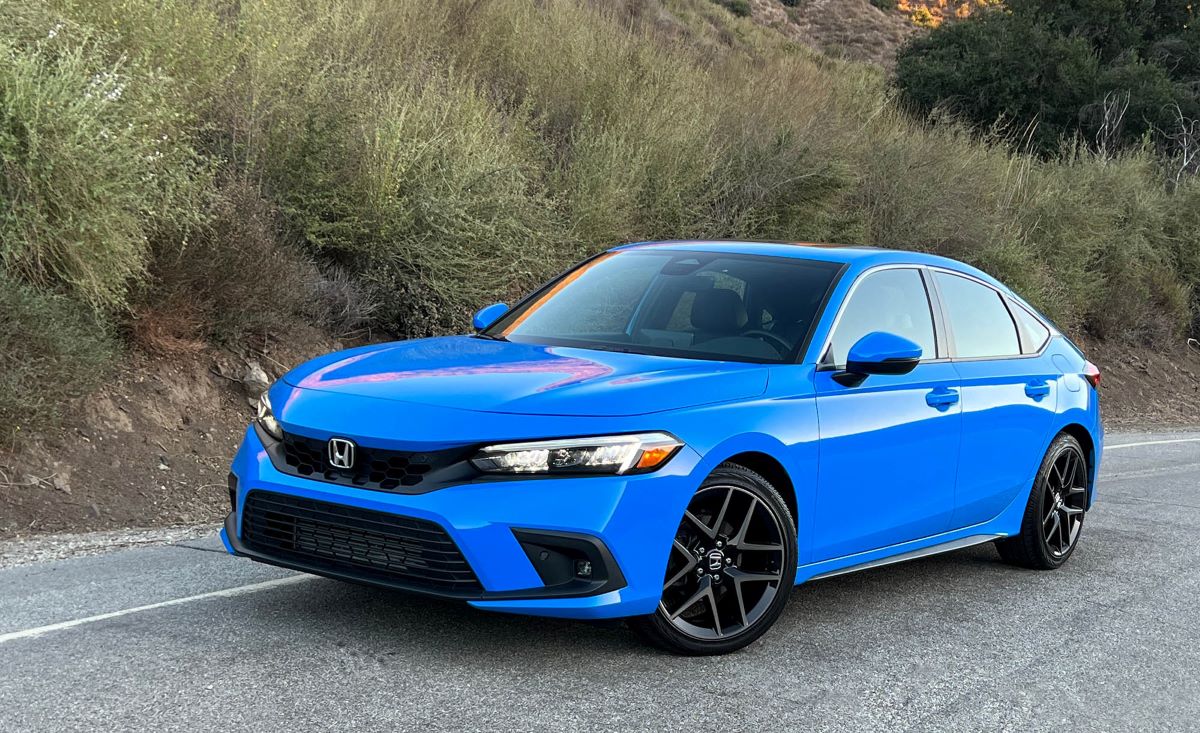
2. Honda Civic
The Honda Civic has long been synonymous with affordability and dependability, and its brake job costs reflect this well-earned reputation. Like the Corolla, the Civic’s braking system benefits from being a mainstream, mass-produced setup with a focus on simplicity and reliability.
The front brakes typically feature ventilated disc brakes, while the rear brakes vary between drum and disc depending on the model year and trim, giving owners more affordable options, especially in base trims.
The availability of affordable OEM and aftermarket parts means that brake pads and rotors for the Civic are consistently priced lower than many competitors in the compact car segment.
The Civic’s popularity means mechanics are very familiar with its brake system. This familiarity translates to shorter labor times, lower labor rates, and fewer surprises during repairs. Because the braking system does not require specialized equipment or procedures, it fits well into the workflow of independent garages, which tend to offer lower prices than dealerships.
This mechanic-friendly nature also benefits do-it-yourself enthusiasts, who can often purchase parts online or from local retailers at affordable prices and replace brake components with common hand tools.
In addition to part availability and labor costs, the Honda Civic’s brake components tend to be durable under normal driving conditions. Civic owners who drive moderately and keep up with routine inspections often find that brake pads last longer than average.
This longevity is partly due to Honda’s engineering focus on balanced vehicle dynamics that don’t overly stress the braking system. Because brake wear is slower, the frequency of brake jobs is reduced, resulting in lower lifetime costs for brake maintenance.
Furthermore, the Civic offers a variety of trim levels and versions, some of which use rear drum brakes, which are generally cheaper to maintain than disc brakes. While disc brakes are more effective and common in modern cars, drum brakes typically cost less to repair or replace due to simpler construction and lower part costs.
This option adds to the Civic’s reputation as a car that can fit the needs and budgets of a wide range of buyers, including those seeking the lowest possible brake maintenance expenses.
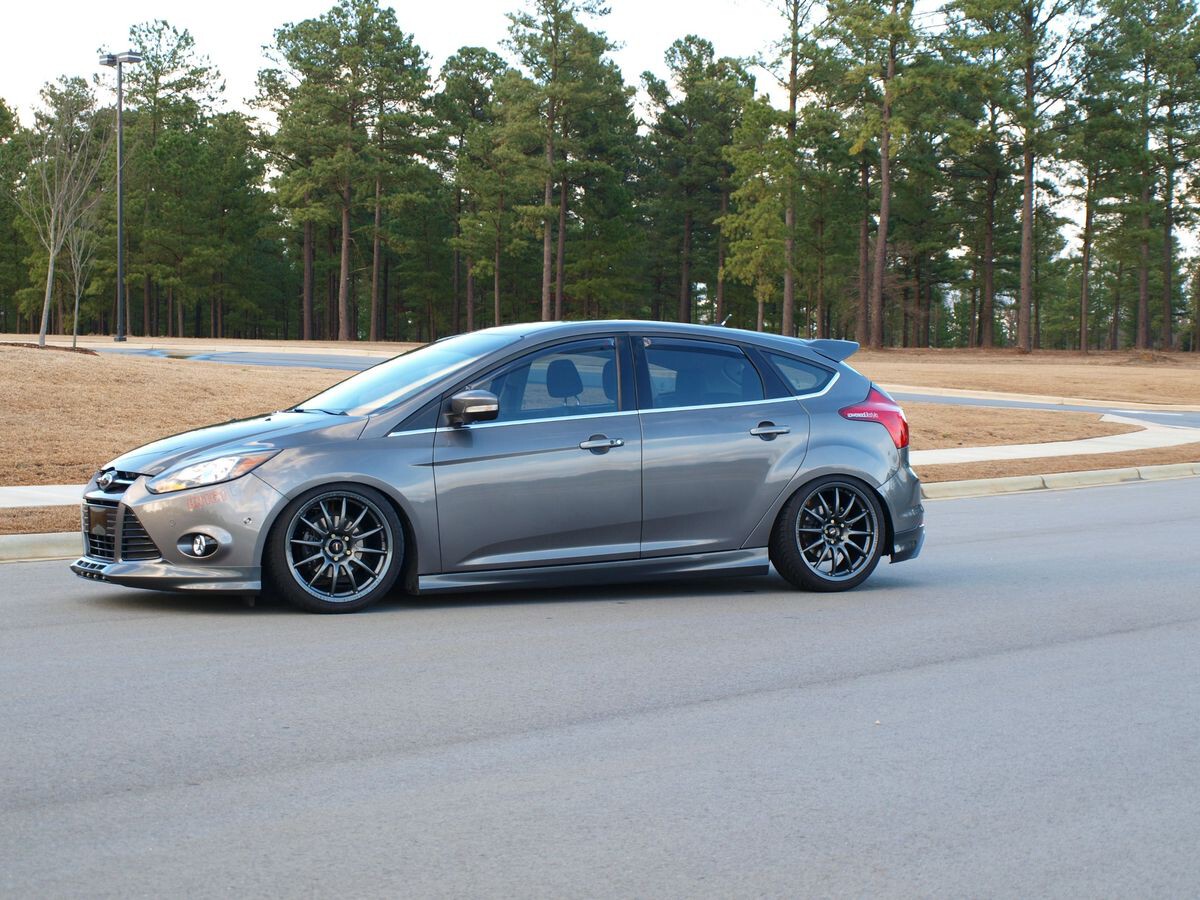
3. Ford Focus
The Ford Focus is another vehicle well-known for its balance between affordability and performance, and this balance extends clearly to its brake maintenance costs. The Focus generally employs front disc brakes and rear disc or drum brakes depending on the model and year, using standard components that are mass-produced and widely available.
The parts’ availability is a critical reason why brake jobs on the Focus tend to be less expensive compared to vehicles with more specialized braking systems. Because Ford produces millions of Focus units globally, parts suppliers keep ample inventories, reducing prices and wait times.
One of the main advantages of the Focus in terms of brake jobs is the relative simplicity of its brake design. The car does not typically require expensive electronic calibration or sensor replacements during standard brake service.
This absence of high-tech components in many trims keeps labor costs reasonable, as mechanics do not need to spend extra time performing software resets or specialized diagnostics. Labor charges, which often account for a significant portion of brake job costs, are thus kept lower for Focus owners.
Moreover, the Focus is designed as a driver-friendly vehicle with balanced handling and moderate weight, which reduces brake wear and extends the lifespan of brake pads and rotors.
The fact that brake components last longer means fewer brake jobs over the vehicle’s lifetime, which has a significant impact on total maintenance costs. In addition, Ford’s parts tend to be competitively priced due to the manufacturer’s relationships with aftermarket suppliers, making it easier for owners to find budget-friendly replacement options.
The Focus is also popular among younger drivers and first-time car buyers who prioritize value and cost-effectiveness. Its brake system has earned a reputation for straightforward, no-nonsense maintenance that doesn’t strain budgets.
Combined with the relative ease of DIY repairs—many owners successfully replace brake pads and rotors at home—this makes the Focus a prime example of an affordable car to maintain when it comes to brakes.

4. Hyundai Elantra
The Hyundai Elantra’s rise in popularity over the past decade has been accompanied by a growing reputation for affordable ownership, and its brake maintenance costs are a big part of that story. The Elantra employs a conventional braking setup with front disc brakes and rear disc or drum brakes, utilizing parts that are produced in large quantities to meet global demand.
The mass production of these components means that brake pads, rotors, and calipers for the Elantra are often priced well below the premium segment, making routine brake jobs accessible to a wide audience.
One of Hyundai’s strengths lies in offering vehicles that deliver value not only upfront but also over time through manageable maintenance expenses. The Elantra’s brake system benefits from this philosophy by minimizing complexity.
Unlike some competitors that incorporate advanced electronic parking brakes or regenerative braking systems in compact cars, the Elantra sticks to tried-and-true mechanical designs that keep labor costs down. This simplicity reduces the skill and time required for brake replacements, lowering the total cost of ownership.
Additionally, Hyundai’s strategic partnerships with parts manufacturers have ensured that aftermarket suppliers can offer a robust selection of affordable brake components.
This competitive market means owners don’t have to rely exclusively on expensive OEM parts. The availability of budget-friendly options makes it easier to maintain the Elantra’s brakes without sacrificing safety or quality. This flexibility also appeals to independent shops and DIY enthusiasts, further pushing down labor expenses.
Finally, the Elantra’s moderate performance profile and efficient braking design lead to gradual brake wear under normal driving conditions. Brake pads and rotors typically last a healthy amount of time, reducing the frequency and urgency of brake jobs.
Combined with Hyundai’s strong warranty programs in many markets, these factors make the Elantra a standout choice for drivers seeking low-cost brake repairs and affordable maintenance in the compact sedan category.
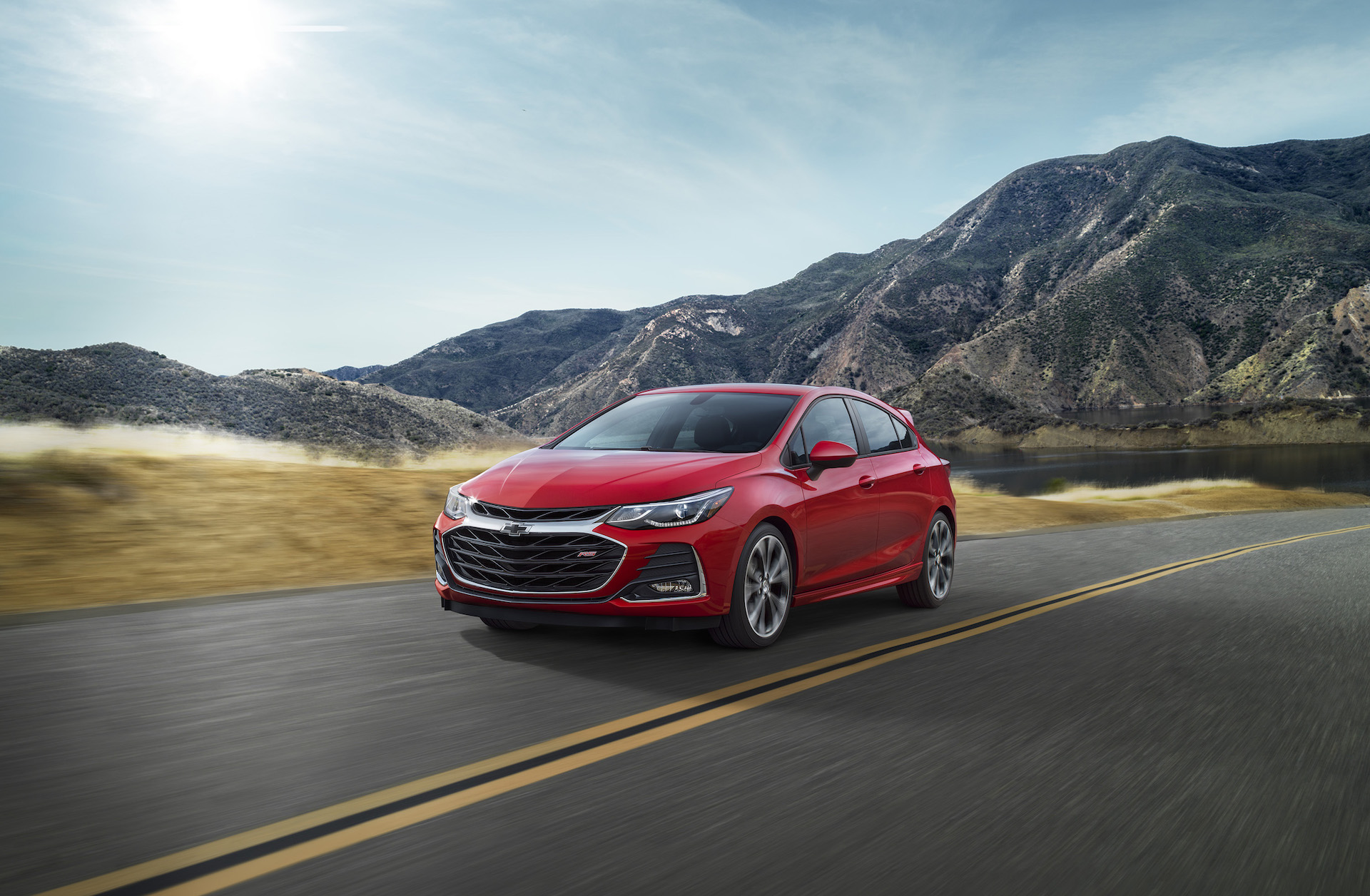
5. Chevrolet Cruze
The Chevrolet Cruze offers a compelling package of affordability and practicality, which extends into the realm of brake maintenance.
The Cruze’s braking system follows the industry-standard formula of front disc brakes and rear drum or disc brakes, with components that are easy to find and relatively inexpensive. The simplicity and commonality of these parts help keep the price of brake pads and rotors well within reach for most owners.
Parts availability is a key contributor to the Cruze’s cheap brake jobs. As a mass-market vehicle, the Cruze benefits from widespread distribution of replacement parts, both OEM and aftermarket.
The competitive market for these parts helps ensure that prices remain low, and the abundance of suppliers guarantees that parts are seldom difficult to source. This accessibility helps reduce both parts and labor wait times, preventing additional costs due to vehicle downtime.
The Cruze’s brake system is also designed for ease of maintenance. Independent mechanics and service centers are familiar with the vehicle’s components and can efficiently perform brake jobs without the need for expensive diagnostic tools or specialized equipment. This familiarity results in quicker service times and lower labor charges, which are often the largest portion of brake job costs.
Lastly, the Cruze’s braking components tend to have respectable durability, especially when the car is driven under normal conditions. The relatively moderate weight and balanced chassis reduce undue strain on brake pads and discs, helping them last longer before requiring replacement.
This translates to fewer brake jobs over the lifetime of the vehicle, which is a significant factor in the Cruze’s appeal as a low-cost maintenance vehicle. Overall, the Chevrolet Cruze offers one of the most affordable brake repair experiences among compact sedans.
5 Cars With Costly Brake Discs and Repairs
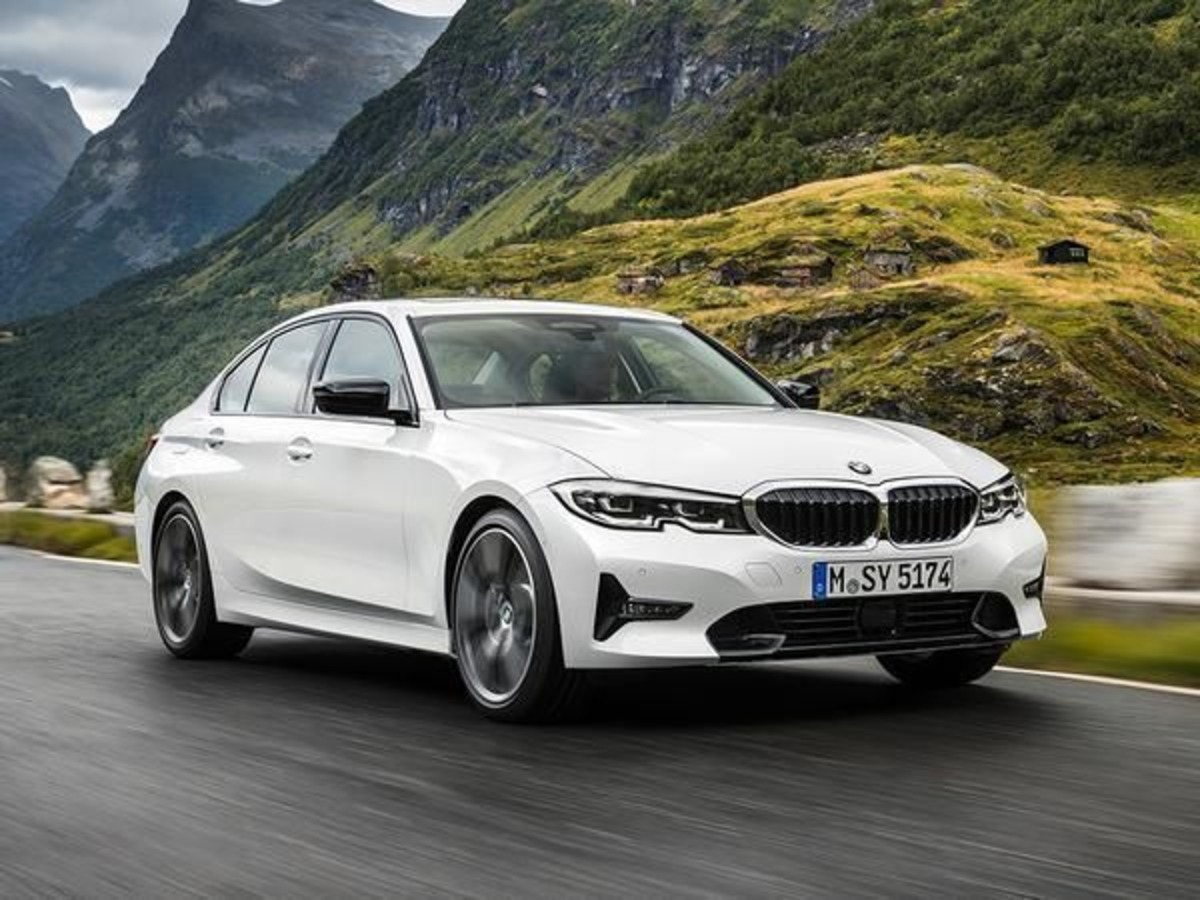
1. BMW 3 Series
The BMW 3 Series is widely celebrated for its dynamic driving experience, refined engineering, and luxury appeal, but this prestige carries a price, especially when it comes to brake repairs. BMW’s braking systems are designed not just to stop the vehicle but to deliver exceptional performance under demanding conditions, which means using high-quality materials and advanced technology.
Most 3 Series models come equipped with ventilated disc brakes on all four wheels, often made from premium alloys or composite materials to provide superior heat dissipation and durability. These materials, however, are more expensive to manufacture and replace than the steel rotors found on mainstream vehicles.
Additionally, BMW incorporates a range of electronic systems into their braking packages that add complexity and cost. Components such as electronic parking brakes, dynamic stability control, and adaptive brake assist systems require specialized diagnostic tools and recalibration after any brake service.
This means that brake jobs on a 3 Series often involve more labor hours than on a conventional vehicle, which increases overall costs. Labor rates at BMW dealerships and specialized independent shops also tend to be higher due to the technical expertise required to work on these systems.
The cost of genuine BMW brake parts is another factor driving up expenses. BMW encourages the use of OEM components to maintain optimal performance and safety, and these parts are priced accordingly. While aftermarket alternatives exist, many owners prefer or are advised to use OEM to avoid potential issues with fit or quality, further increasing repair costs. In many cases, brake rotors and pads for the 3 Series can cost two to three times as much as similar parts for non-luxury sedans.
Lastly, the performance-oriented nature of the 3 Series means that owners often push the braking system harder than typical drivers, leading to faster wear. Enthusiasts who take their cars on spirited drives or track days may find themselves replacing brake discs and pads more frequently, escalating the cost over time.
All these factors combined make the BMW 3 Series an example of a vehicle where brake disc replacements and associated repairs come with a steep price tag, reflecting its luxury and performance pedigree.
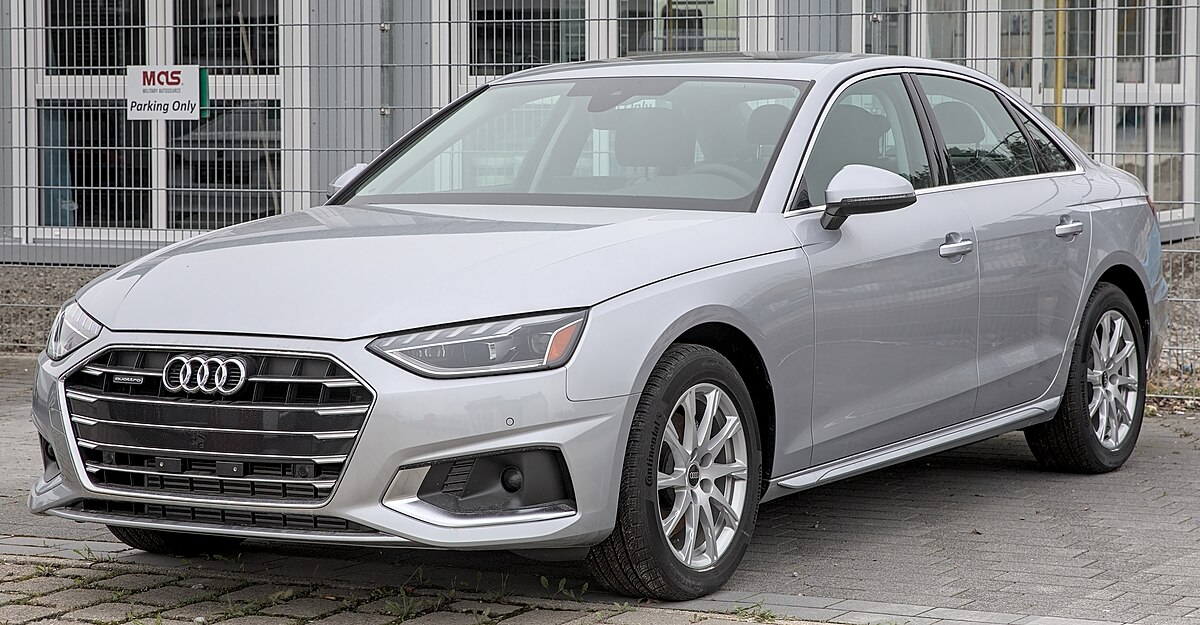
2. Audi A4
Audi’s A4 is a staple in the luxury compact segment, delivering a sophisticated blend of performance, comfort, and technology. However, this sophistication is mirrored in the complexity and cost of its braking system.
Audi frequently equips the A4 with high-performance ventilated disc brakes that use corrosion-resistant coatings and advanced alloy constructions. These features improve braking efficiency and longevity but also result in higher replacement costs for brake discs and pads.
What sets the A4 apart in terms of brake maintenance costs is the integration of advanced electronic components such as electronic parking brakes and sensors for Audi’s renowned quattro all-wheel-drive system. During brake repairs, these systems must be carefully calibrated using specialized diagnostic equipment to ensure proper function.
This calibration adds to labor time and cost, as not all repair shops have the necessary tools or expertise, pushing owners towards authorized dealerships or specialized service centers.
The pricing of genuine Audi brake components also reflects the brand’s premium positioning. OEM brake discs and pads for the A4 are typically manufactured to very tight tolerances and performance standards, and they come at a premium price point.
Unlike more mainstream vehicles, affordable aftermarket options for Audi brakes can be limited or less reliable, meaning owners often have fewer cost-saving alternatives. This scarcity and necessity for genuine parts drive up repair bills.
Finally, Audi drivers tend to expect high braking performance from their vehicles, which can translate into more aggressive braking habits and, consequently, more rapid wear of brake components.
High-speed highway driving, mountain road use, and stop-and-go city traffic all accelerate brake disc wear. As a result, Audi A4 owners should be prepared for higher-than-average brake maintenance costs throughout the life of the vehicle, a trade-off for the car’s premium driving experience and advanced technology.
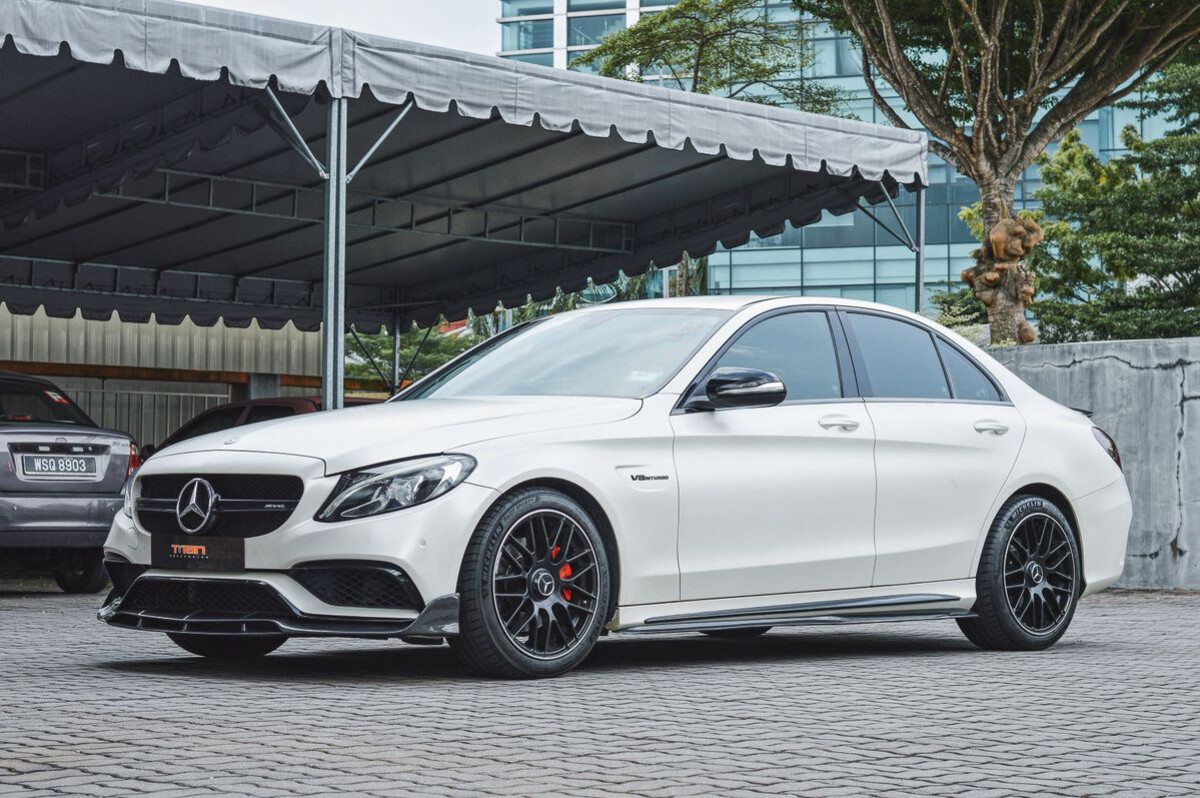
3. Mercedes-Benz C-Class
The Mercedes-Benz C-Class is a quintessential luxury sedan that offers a blend of comfort, safety, and cutting-edge technology, but it also comes with a premium maintenance price tag, particularly for brakes. The C-Class features sophisticated braking systems designed to deliver smooth yet powerful stopping performance.
Its brake discs are usually larger than those on average cars and often ventilated or cross-drilled to improve cooling and reduce fade during heavy use. These premium brake discs are made from high-quality materials that are both expensive to manufacture and replace.
Mercedes integrates numerous electronic aids into the braking system, such as ABS, brake assist, and electronic stability control, all of which require careful calibration after any brake component replacement.
Technicians must have access to specialized Mercedes-Benz diagnostic tools to reset and recalibrate these systems correctly, adding complexity and labor costs to brake jobs. This is further compounded by the need for precision and strict adherence to OEM procedures, which many independent shops cannot match.
In addition, Mercedes-Benz strongly encourages the use of genuine OEM parts to maintain vehicle safety and performance. These parts carry a significant premium, as the manufacturer enforces high standards of quality and fitment.
While aftermarket parts might be available, they are less frequently recommended or used, especially by dealerships, which makes brake maintenance considerably more expensive than on non-luxury vehicles.
Owners of the C-Class often drive their vehicles with expectations of luxury performance, which includes high braking responsiveness and confidence.
This driving style, coupled with the heavier weight of luxury features and materials, puts additional stress on brake components, potentially increasing wear and shortening service intervals. The combination of expensive parts, intricate electronics, and labor-intensive procedures places the Mercedes-Benz C-Class among the vehicles with the costliest brake jobs.

4. Tesla Model 3
The Tesla Model 3 is a groundbreaking electric vehicle that challenges traditional car maintenance models, but it is not exempt from costly brake repairs. While Teslas benefit from regenerative braking systems that reduce wear on traditional brake components, when mechanical brakes do require servicing or disc replacement, the cost can be surprisingly high.
Tesla uses large, high-performance rotors and calipers designed specifically for electric vehicle requirements, which are not only expensive to manufacture but are also relatively scarce outside of Tesla’s own supply chain.
The proprietary nature of Tesla’s parts distribution means that owners are generally limited to authorized Tesla service centers for replacement parts and labor. This exclusivity reduces competition, leading to higher prices for both parts and service compared to more conventional vehicles.
Additionally, Tesla’s brake system integrates deeply with its electronic controls, requiring technicians to use proprietary software and diagnostic tools to properly calibrate and configure the brakes after maintenance, further adding to labor costs.
Even though regenerative braking reduces the frequency of brake jobs, the complexity of the Model 3’s braking system and the limited aftermarket availability for parts can inflate repair costs when mechanical brake service is necessary.
The Model 3 also uses unique brake system designs optimized for electric powertrains, meaning off-the-shelf replacement parts are rarely compatible, further narrowing options and increasing prices.
Moreover, Tesla’s relative newness in the market means parts manufacturing and supply chains are still developing, which can lead to higher prices and longer wait times for brake components. These factors combine to make the Tesla Model 3’s brake jobs costlier than many expect for an electric vehicle, reflecting the cutting-edge technology and proprietary nature of Tesla’s engineering approach.

5. Porsche 911
The Porsche 911 is an iconic high-performance sports car designed for drivers who demand exceptional braking capability to match the car’s thrilling acceleration and handling. However, this high-performance pedigree comes with very expensive brake jobs.
The 911 often comes equipped with large, ventilated, and sometimes carbon-ceramic brake discs, especially in higher trims or sport-oriented models. Carbon-ceramic discs are renowned for their incredible heat resistance and lightweight properties, but they are extremely costly to produce and replace, sometimes costing several thousand dollars per disc.
Even the standard cast iron or steel rotors on a Porsche 911 command a premium price due to Porsche’s strict manufacturing tolerances and high-quality material standards.
The brake pads and calipers are also performance-oriented and designed for precision, which means replacements are specialized and expensive. Labor costs for brake jobs on the 911 are higher as well, since mechanics must have specialized training and tools to safely service these advanced systems without compromising the vehicle’s performance or safety.
Porsche’s braking systems often include advanced electronic aids such as Porsche Stability Management (PSM) and anti-lock braking systems that require recalibration after any brake work. This recalibration involves sophisticated diagnostic equipment and software, which adds time and cost to the job.
The precision and care required during these services make DIY repairs almost impossible and push owners toward authorized service centers with premium pricing.
Finally, the Porsche 911 is driven by enthusiasts who often use their cars for spirited driving or track days, conditions that dramatically increase brake wear. Frequent high-speed stops and heavy braking accelerate rotor and pad degradation, necessitating more frequent and expensive replacements.
All these factors combined ensure that brake disc replacements and repairs on the Porsche 911 remain among the most expensive in the automotive world, a reflection of the car’s elite status and uncompromising performance standards.
Also Read: 5 Cars With the Most Accurate Speedometers and 5 Off by 8 MPH
Brake maintenance costs are an important but often underestimated factor in car ownership. While many buyers focus on upfront purchase prices, insurance rates, or fuel efficiency, the cost of maintaining critical safety components such as brakes can significantly affect the total cost of ownership over time.
This article has highlighted two contrasting groups of vehicles to illuminate the wide range of brake job expenses encountered in the market today. From dependable economy cars with cheap brake repairs to luxurious or high-performance models with costly brake disc replacements, the differences reveal much about automotive design, technology, and market positioning.
Cars like the Toyota Corolla, Honda Civic, Ford Focus, Hyundai Elantra, and Chevrolet Cruze exemplify vehicles designed with cost-effective maintenance in mind. These cars benefit from conventional, tried-and-true braking systems that use widely available and affordable parts.
Their simpler designs and large global sales volumes mean parts are easy to source and labor is relatively straightforward, reducing repair times and costs.
Additionally, their moderate driving dynamics and weight contribute to longer-lasting brake components. For budget-conscious drivers or those seeking reliable transportation with manageable upkeep, these vehicles offer peace of mind and predictability in maintenance expenses.
On the other end of the spectrum, luxury and performance vehicles such as the BMW 3 Series, Audi A4, Mercedes-Benz C-Class, Tesla Model 3, and Porsche 911 illustrate how advanced engineering and high-performance demands can substantially raise brake job costs.
These cars utilize premium materials like ventilated or carbon-ceramic rotors, incorporate sophisticated electronic braking systems, and require specialized diagnostic tools and trained technicians for service.
The elevated labor rates at luxury dealerships and the premium pricing of OEM parts combine to make brake repairs a notable expense. Owners of these vehicles must be prepared to invest more in maintenance, which reflects the premium nature and driving experience these cars provide.
It’s also clear that technological advancements in braking systems, while improving safety and performance, can add complexity and cost to maintenance. Electronic parking brakes, adaptive brake assist, and stability control systems require recalibration during brake jobs, which often necessitates dealer visits or specialized shops.
Similarly, the shift toward electric vehicles, as seen with Tesla, presents a unique maintenance profile—while regenerative braking reduces brake wear, the proprietary nature of parts and services may increase costs when mechanical brakes do require service.
Ultimately, understanding these factors can empower car buyers and owners to make choices aligned with their budget and lifestyle. If low maintenance costs are a priority, selecting a vehicle with a straightforward braking system and widely available parts can minimize future expenses. Alternatively, those willing to pay a premium for performance and luxury should budget accordingly for brake maintenance.
Moreover, drivers can also influence brake job costs through their driving habits. Gentle braking, regular maintenance checks, and avoiding aggressive stops can extend the life of brake components, reducing the frequency and cost of repairs regardless of the vehicle. Preventative care and timely replacement of brake pads can also protect brake discs from excessive wear, saving money in the long run.
In conclusion, brake job costs vary widely across the automotive landscape, influenced by vehicle type, engineering, part availability, and usage. By comparing the cheapest and costliest brake jobs, this article provides a clearer picture of what to expect when it comes to this essential maintenance task.
Whether you prioritize affordability or premium performance, knowledge of brake maintenance costs is key to responsible vehicle ownership and budgeting. Being informed helps drivers avoid surprises and make the most of their investment in safety and mobility.
